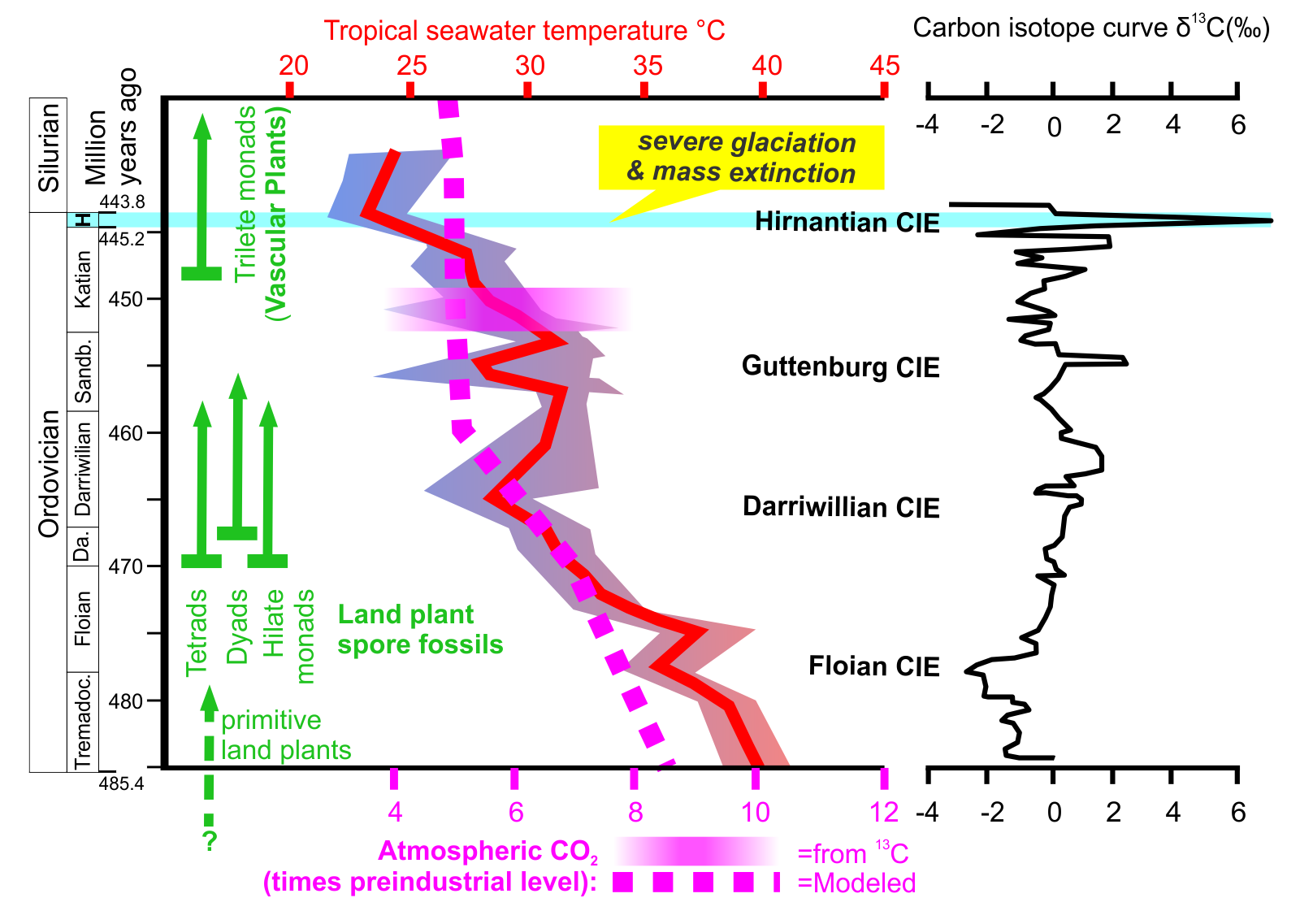
What The Science Says:
During the Ordovician, solar output was 4% lower than current levels, and there was a large continent over the South Pole. Consequently, CO2 levels at around 1,000 to 2,300 ppm were actually low enough to promote glaciation in the southern continent of Gondwana. Ample geological and geochemical evidence points to strong weathering in parallel with the cooling of the Ordovician climate. Since rock weathering reduces atmospheric CO2, this again reinforces the scientific fact that CO2 is a strong driver of climate.
Climate Myth: CO2 was higher in the late Ordovician
"To the consternation of global warming proponents, the Late Ordovician Period was also an Ice Age while at the same time CO2 concentrations then were nearly 12 times higher than today - 4400 ppm. According to greenhouse theory, Earth should have been exceedingly hot. Instead, global temperatures were no warmer than today. Clearly, other factors besides atmospheric carbon influence earth temperatures and global warming." (Monte Hieb)
Older scientific papers inferred very high CO2 levels in the Ordovician, generating a paradox of a cold climate during a time of high greenhouse gas levels. But recent work has shown that atmospheric CO2 was much lower than the myth claims, and it kept falling through the Ordovician. It was less than 8 times preindustrial values towards the end (see the graph below), which may sound very high, but with a 4% fainter sun back then and with a large continent over the South Pole, it was low enough to trigger a major continental ice sheet.
The Ordovician was a time of mountain building (the Taconic/Caledonian orogeny) and violent ashy volcanic eruptions as the continents of Laurentia, Baltica and Avalonia began to collide. Mountain building, lots of fresh volcanic ash and erosion tend to accelerate the weathering of silicate rocks, which draws down CO2 from the atmosphere, cooling the planet on a timeframe of hundreds of thousands to millions of years. And indeed, strontium isotopes confirm a large increase in the contribution of weathered volcanic rocks into ocean waters between about 470 and 450 million years ago. Neodymium isotopes (a proxy for ancient sea level change) show that ice sheets were in place in the late Ordovician.
The latter half of the Ordovician also saw the development of Earth's earliest plant-dominated terrestrial biosphere. Those early moss-like plants accelerated rock weathering rates, simultaneously drawing down CO2 and supplying nutrients like phosphorous to the oceans, which fertilized plankton activity, which further reduced CO2 as their carbon-rich remains sank to the sea bed. The climate cooled so much that it crossed a "tipping point" 444 million years ago, triggering the Hirnantian Glaciation, which was so severe it resulted in one of the biggest mass extinctions since animals first evolved. For more on that see this article.
So, far from presenting a paradox, late Ordovician CO2 levels are entirely consistent with a cool climate and glaciation. Moreover the geological, geochemical and fossil evidence all consistently show that a big drawdown of CO2 drove that cooling, proving again that CO2 is the principle control knob on climates both ancient and modern.

Cooling climate before the Hirnantian Mass Extinction. Cyan horizontal band is the Hirnantian Stage. Redrawn from Armstrong & Harper 2014. 13C-derived CO2 range from Pancost et al 2013, Plant spore first appearance simplified from Edwards et al 2014 and Rubinstein et al 2010.
Intermediate rebuttal written by howardlee
Update July 2015:
Here is a related lecture-video from Denial101x - Making Sense of Climate Science Denial
 |
The Skeptical Science website by Skeptical Science is licensed under a Creative Commons Attribution 3.0 Unported License. |